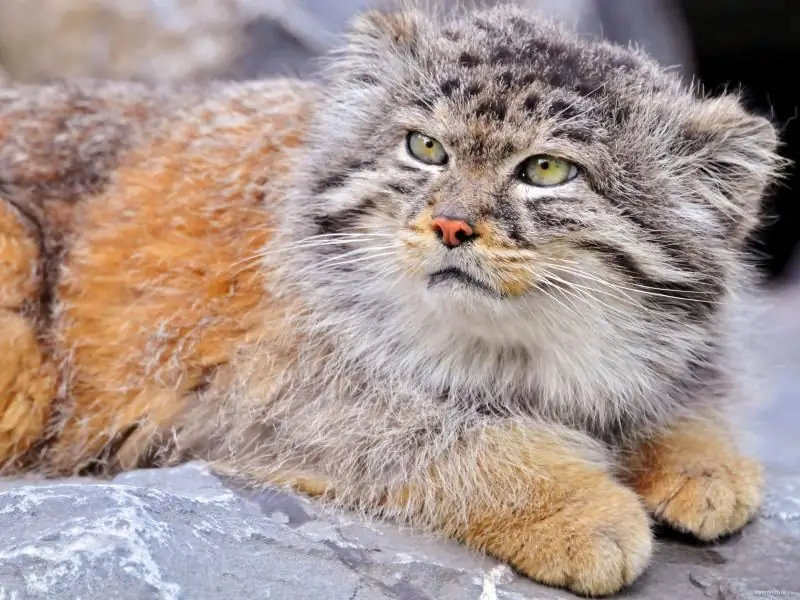
Table of contents:
- Author Bailey Albertson [email protected].
- Public 2023-12-17 12:53.
- Last modified 2025-01-23 12:41.
Handsome manul - an inhabitant of the wild

The history of the appearance of steppe cats is one hundred and twenty thousand years old. And although in appearance and behavior, steppe cats are very similar to their domestic relatives, they lead a wild lifestyle. One of the representatives of such wild cats is the Pallas' cat. The world first became aware of this breed in 1776 from the German naturalist P. S. Pallas, in honor of whom the animal received another name - the pallas cat.
Content
-
1 The appearance of a steppe cat
- 1.1 Siberian (forest) manul
- 1.2 Central Asian (steppe) manul
- 1.3 Tibetan (cave) manul
-
2 Pallas' cat in the wild
- 2.1 Manul habitat
- 2.2 Life and food
- 2.3 Reproduction of manul
-
3 Pallas' cat in captivity
- 3.1 Is it possible to keep Pallas' cat in captivity
-
3.2 The nature and behavior of the manul
3.2.1 Video: small Pallas' cat hisses and growls in anticipation of danger
- 3.3 Pallas cat food
- 3.4 Video: on the domestication of the manul
The appearance of a steppe cat
The soft and fluffy Pallas' cat has a very unfriendly and gloomy expression on its face. Outwardly, the steppe wild cat looks like a large domestic cat of the Persian breed.

Outwardly, the Pallas' cat resembles a domestic cat of the Persian breed
Its dimensions:
- weight within 2‒5 kg;
- body length 50‒65 cm;
- height at the withers 25 cm;
- the length of the skull is about 9 cm;
- width at the cheekbones 7 cm;
- ear height and width 5 cm;
- tail length 21‒31 cm with a rounding at the end.
Males are usually larger than females. The cat has a wide, flattened muzzle and a small head. Small rounded ears are quite far apart. The paws of the animal are thick, short, with sharp claws at the ends. The eyes are yellow. The peculiarity of Pallas' cat is that bright light does not change the round shape of the pupils, while the pupils of a domestic cat become vertical.

Pallas' cat has yellow eyes, and the pupils do not narrow in the light
Pallas' cat looks larger in appearance than its domestic counterparts, since it has a long thick coat. In length, it sometimes reaches 7 cm, and by 1 cm 2 it grows up to 9 thousand villi. Due to the white tips on the villi, the fur of the steppe cat has a silvery tint. Pallas' cat has excellent eyesight and hearing, but poor sense of smell.
Pallas cat's coat has a light gray or fawn color. This is determined by the habitat of the animal. There are black specks on the forehead, and black stripes on the sides of the muzzle. The same black stripes are on the tail of the animal and its back of the body. Underneath, the body is painted brown with traces of white bloom.
The Pallas' cat has several types. There is a slight difference between the two.
Siberian (forest) manul
Forest Pallas' cat is a classic representative of the breed. It has a light gray coat and localized black stripes. The beast can be found in Transbaikalia, Mongolia, China. It was such a manul that Pallas first discovered and described his lifestyle in 1776.

The common Pallas' cat has a light gray color and is considered a classic representative of the breed.
Central Asian (steppe) manul
Wild animals of this breed differ from the classic species primarily in the color of their coat. They have a reddish color with reddish stripes. Central Asian Pallas' cat live in Afghanistan, Tajikistan, Turkmenistan and other countries of Central Asia. This subspecies has been known since 1842.

The Central Asian Pallas' cat has a reddish shade of wool
Tibetan (cave) manul
Pallas 'cat of this breed are similar to representatives of common and Central Asian Pallas' cat. Their difference is in the color of the coat, in this breed it is darker than that of ordinary Pallas' cats. And when winter comes, the wool of the Tibetan Pallas' cat takes on a silvery hue. They live in Tibet, Uzbekistan, Kazakhstan, Tajikistan, Kyrgyzstan, India, Pakistan.

The wool of the Tibetan Pallas' cat has a darker color, and in winter it acquires a silvery hue
Pallas' cat in the wild
Such a beast has a very difficult character. He prefers loneliness, secretive and cautious by nature. Among the representatives of wild cats, the Pallas' cat is the least agile and adapted to fast, abrupt movement.
Manul habitat
The places of stay of wild cats are mountains, foothills, steep low-mountain ranges, crevices with a harsh continental climate, snowfalls and cold winters. For such conditions, the animal has a very warm fur coat. Pallas' cat in the mountains can climb to a height of about 4.5 km above sea level. In forest thickets, they almost never exist. In the open steppes, cats usually do not linger for a long time and are looking for nearby hills.

Pallas' cat in the steppe and forest thickets does not stay, he prefers mountains
Life and food
This wild cat is a predator. During the day he sleeps in shelter.

Manul sleeps during the day, and in the early morning and at night he is active
At night begins hunting for small rodents. The animal feeds mainly on mice, pikas; sometimes hares, marmots, ground squirrels. During the period of the arising depression of pikas, which happens more often in the summer, the cat eats all kinds of insects in large quantities. Foxes, ferrets, and birds of prey are rivals for food.

Mice are the main prey for Pallas' cats
These clumsy and slow cats catch their victims near their holes, setting up an ambush there. Pallas' cat also hunts for larks and partridges.

Pallas' cat disguises itself on the hunt, waiting for its victims in ambush
The wild cat makes a home for itself in crevices of rocks, small caves, former holes of foxes and badgers, under stones. The most important condition is that the place must be hidden from human eyes, since man is the main enemy for an animal of this breed. In this regard, wild cats cannot be seen near places where people live. From their enemies, they climb rocks, trees, hide in gorges or holes. In an irritated state, cats are able to emit harsh sounds, reminiscent of the cry of an owl, a dog barking, rather than the usual sounds made by felines.

Pallas' dwelling is arranged among stones, in holes, caves
Reproduction of Pallas' cat
Since Pallas' cats lead a lonely lifestyle, in nature they do not meet with their family. Usually the Pallas' cat is content with a gorge, a hole, a cave with an area of about 4 m 2. Mating takes place once a year, it begins in early February and lasts until the end of March. The estrus period in cats is very short. There will be no offspring if conception is not realized in two days.
Pregnancy in female Pallas' cat is 60 days. Kittens are born between early April and late May. Before the birth of kittens, females find a cozy place for themselves, located in a burrow, a rock. Kittens appear, as is always the case, blind. Pallas' cats do not have a distinct black color. Pallas' cat at one time very rarely give birth to more than six kittens, usually in a litter of two to five pieces.

Pallas' cat very rarely has more than six kittens
The weight of one baby is from 250 to 300 g, its length is from 10 to 12 cm. In about two weeks the kittens open their eyes and begin to study the world around them with curiosity. And after 3 months from the time of birth, the babies begin to hunt on their own. Young Pallas' cat reaches puberty at about 10 months of age.
Pallas' cat in captivity
Such a cat is a representative of wild steppe animals, therefore it cannot be domesticated.
Is it possible to keep Pallas' cat in captivity
Once in captivity, wild cats become aggressive and will defend themselves with their claws and fangs when they sense that they are in any danger. Manulu can create tolerable living conditions, similar to the natural environment, only in a zoo. Living in sparsely populated areas made the cat a hermit, shying away from other animals.

Good living conditions in the zoo make the manul feel like in his native environment
Even in the zoo, the manul will see enemies in the animals surrounding him. However, if he is allocated a separate spacious aviary, the wild cat will feel like it is in its native element. Zoos even try to breed these animals. Pallas' cat pretty quickly adapt to living conditions, it is not difficult to keep them there. And with reproduction, certain difficulties arise.
Of course, at home, a private courtyard is better suited for a manul residence. Here it will be more convenient for him to indulge in a nocturnal lifestyle and not interfere with his owners. The animal is accustomed to low temperatures, trees and bushes will remind it of its natural habitat. Keeping a cat in an apartment is strongly discouraged: it will not be possible to create suitable conditions for it so that it can hide without creating problems for the owners during a night hunt.
It is necessary to remember about precautions when visiting the territory where this cat is located, as you can get deep scratches and painful bites. For all its slowness, the manul has an instant reaction, he can attack a person without any warning signals.
The character and behavior of the manul
Even with a wild disposition and quarrelsome nature of Pallas' cat, sometimes he is still chosen as a pet. In their natural habitat, Pallas' cats love solitude and are not cocky. People who want to settle Pallas' cat in their home need to think carefully. A wild cat can cause a lot of problems for its owners. Pallas' cat at home begins to spoil the wallpaper, curtains, furniture, that is, everything that is within his reach. The cat's very long coat is also a problem.
Rarely does anyone manage to tame the unbridled temper of the manul. In the event that he gets into the house as a baby, it is not at all clear whether he will be able to get used to the home conditions of life. In this case, even the fact that he was fed by a tame cat, and he grew up surrounded by domestic kittens, will not affect his character. As a representative of wild animals, Pallas' cat will constantly avoid both its half-relatives and people.
If a manul kitten can play with a human hand, then when it reaches puberty, it will become impossible, instincts will take their toll.

Pallas' cat will never be able to become a completely domestic cat, even if from childhood he lives in an apartment.
Video: a small Pallas' cat hisses and growls in anticipation of danger
The wild cat moves slowly and measuredly. He gets tired quickly, so the cat lies more often than moves. When the moment of danger comes, the manul prefers to hide rather than run away.
Given the nature and disposition of Pallas' cat, the only advantage of keeping it at home is the ability to constantly observe the behavior of this wild handsome man. There are clearly more negative aspects of the animal's stay in the house:
- attempts to stroke, hold, caress an animal, and at any age, are unlikely to be crowned with success, since the cat avoids a person;
- Pallas' cat will spoil everything - from furniture to household items;
- due to constant shedding, shreds of wool will scatter throughout the apartment;
- since a cat cannot be tamed, its wild habits cannot be suppressed, it is impossible to predict how it will behave with people and other domestic animals when it feels a threat to itself;
- it is difficult to provide such a beast with medical assistance: he does not let anyone near him, even when he is sick.
Pallas cat food
Before you start a manul, you need to think about such an important issue as feeding it. It is unlikely that at home he can be given what he used to eat in the wild. It is doubtful that a wild animal will want to eat canned food or dry cat food. In the zoo, these animals eat meat and rodents as food.
Video: on the domestication of the manul
No matter how beautiful and attractive the Pallas' cat is, this is a wild animal that does not need to be turned into a pet, it will never really become like that. In addition to everyday troubles, he has unpredictable behavior. In addition, being at home is destructive for a wild animal. It must be remembered that damage from such content will be caused not only to the animal, but also to nature itself, since the manul is protected by law.
Recommended:
Steppe Cat: Lifestyle, Habitat, Keeping In Captivity, Breeding And Feeding Of The Cat
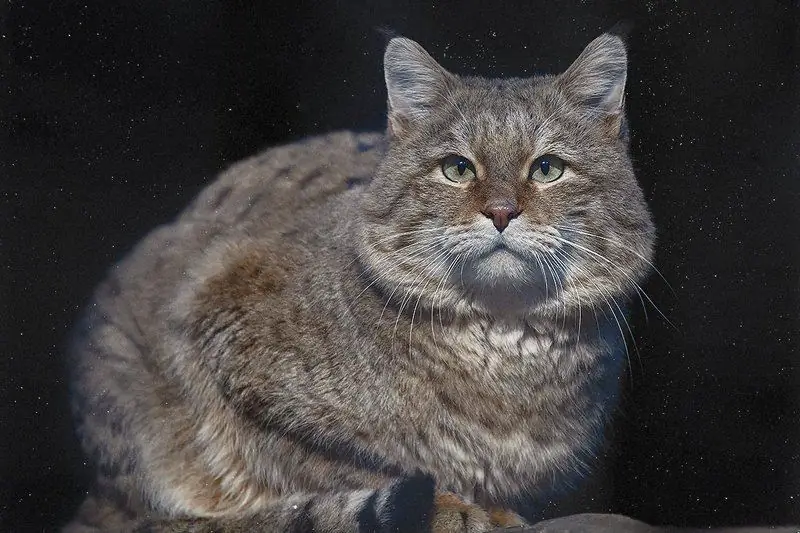
The appearance of a steppe cat. Habitat. Life in the wild. What do spotted cats eat? Reproduction and life expectancy. Wild cats in captivity
Andean Cat: Description Of The Breed, Nature And Habits, Habitat, Keeping In Captivity, Photo
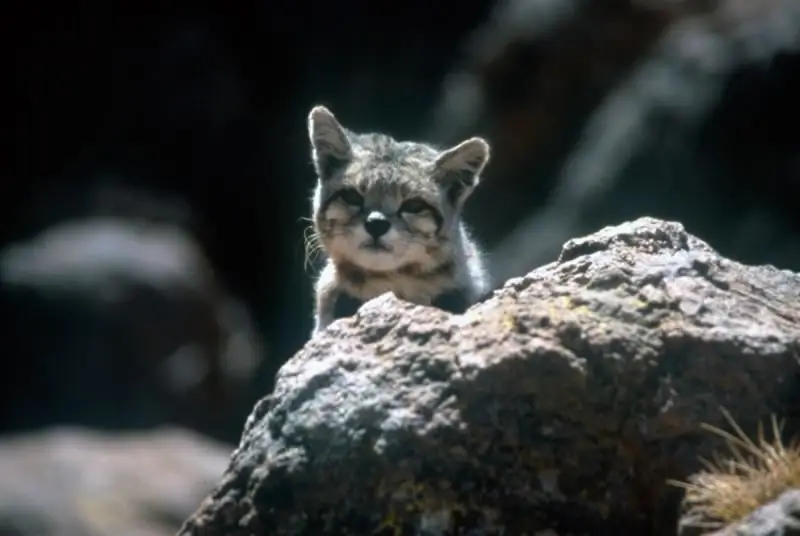
How this rare cat was discovered. What does an Andean cat look like, where it lives in nature, what kind of life it leads, can it be kept in captivity
Black-footed Cat: Lifestyle And Habitat, Distinctive Features, Keeping In Captivity
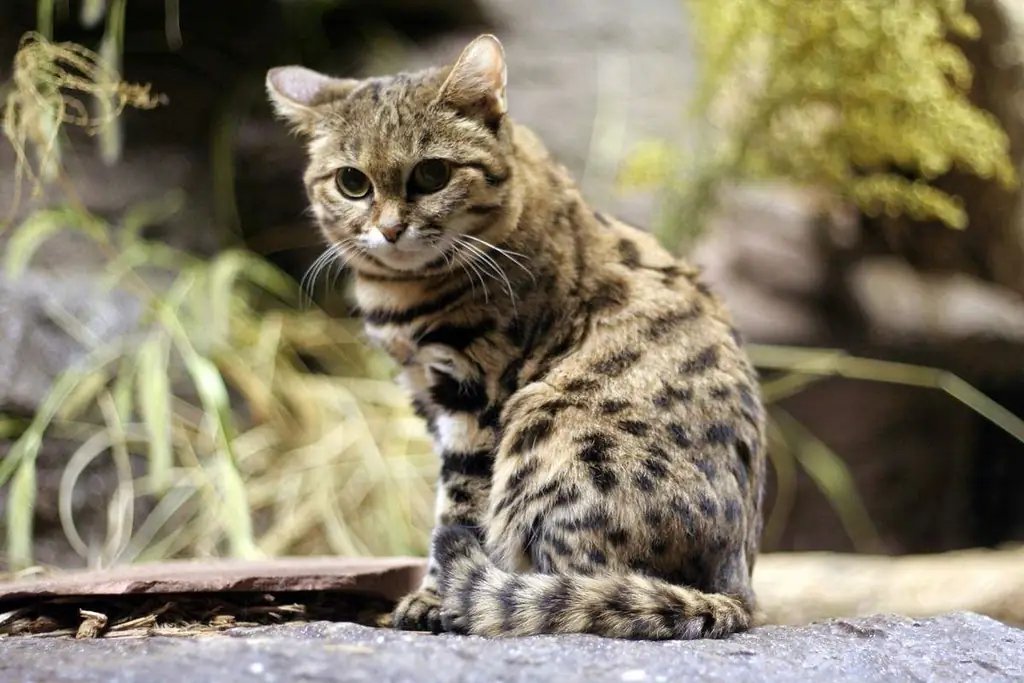
Where does the black-footed cat live, what distinctive features it has, how it hunts and reproduces, how to keep the cat at home
Far Eastern Forest Cat (Amur): What It Looks Like, Photo, Habitat, Keeping In Captivity
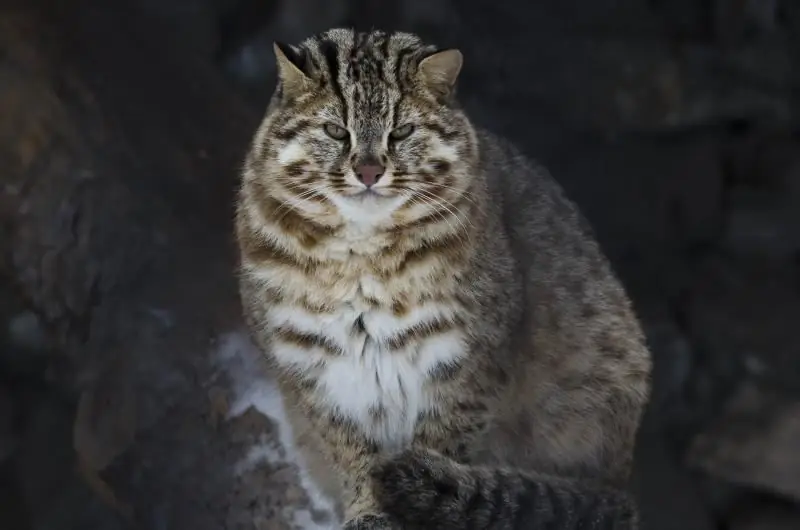
The appearance of the Amur wild cat. Range and lifestyle of the Far Eastern forest cat. The life of an Amur cat in captivity. Conditions of detention and safety
Jaguar: Description Of The Appearance Of A Wild Cat, Character, Habitat And Lifestyle, Photo
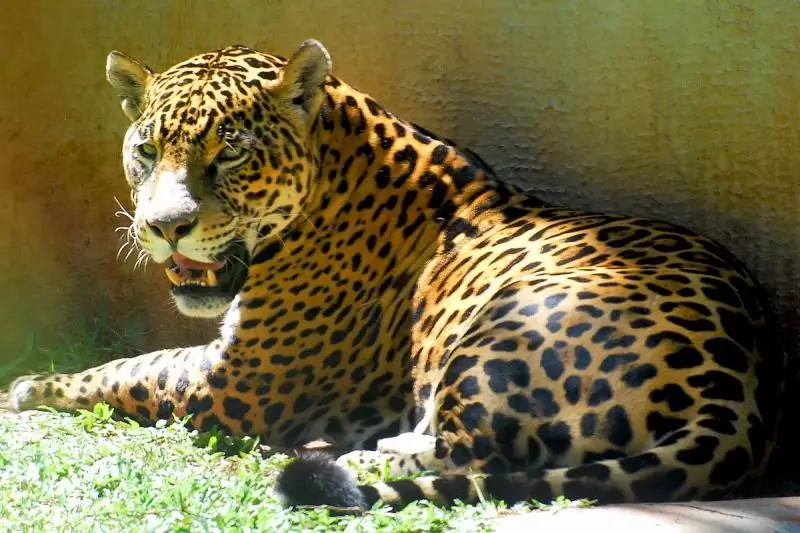
Who is a jaguar. Appearance and character. Habitat. How jaguars eat. Life in captivity
